The Complete Creative Agency Sales Process [2025]
Learn the complete agency sales process to win more clients in 2025. A step-by-step guide for creative agencies. 🚀




If you run a creative agency, you’ve definitely had a lot of marketing-qualified leads. But sometimes, your discovery call could feel rushed; you'd send proposals, and clients will respond with a vague “we’ll circle back.” Most times, they never do.
The truth is, every creative agency has something they do differently when it comes to sales, and what works for this agency may not work for the next.
For instance, this new marketing agency owner wants to onboard more clients, and he needs a good process to follow. So, he asked on Reddit:

Now, every agency follows a similar pattern: call > discovery > presentation > close. Even this article will follow a similar pattern), but there's a bit of difference in how everyone achieves this.
For example, Jake Hundley, CEO at Evergrow Marketing, says they do inbound marketing through HubSpot, get on a call with clients (the usual process), but he doesn't regularly close on calls. He follows up via email (automated through HubSpot), and it works:
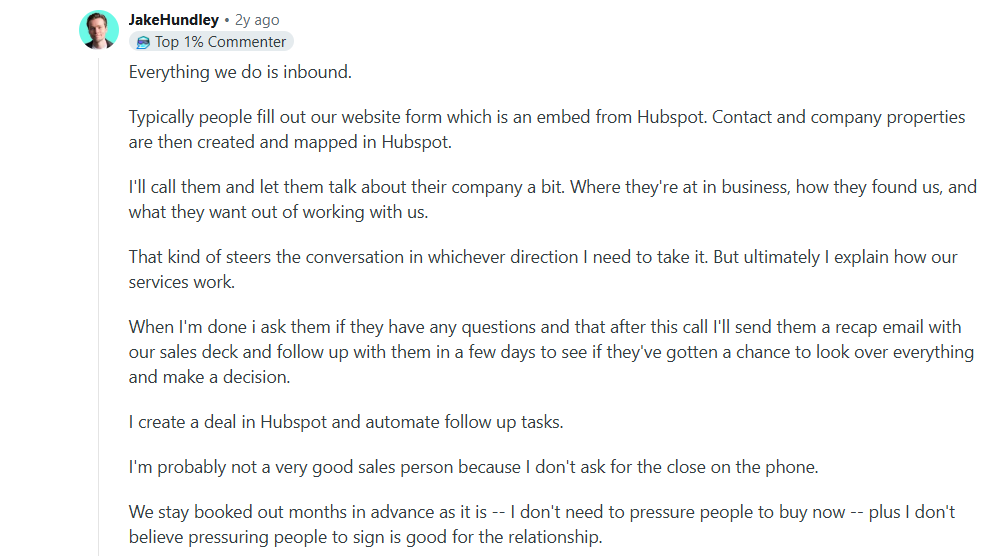
In another Reddit post, he explains that he follows the discovery call > email & call follow-ups for days:

Another user says not to see your sales process as linear:
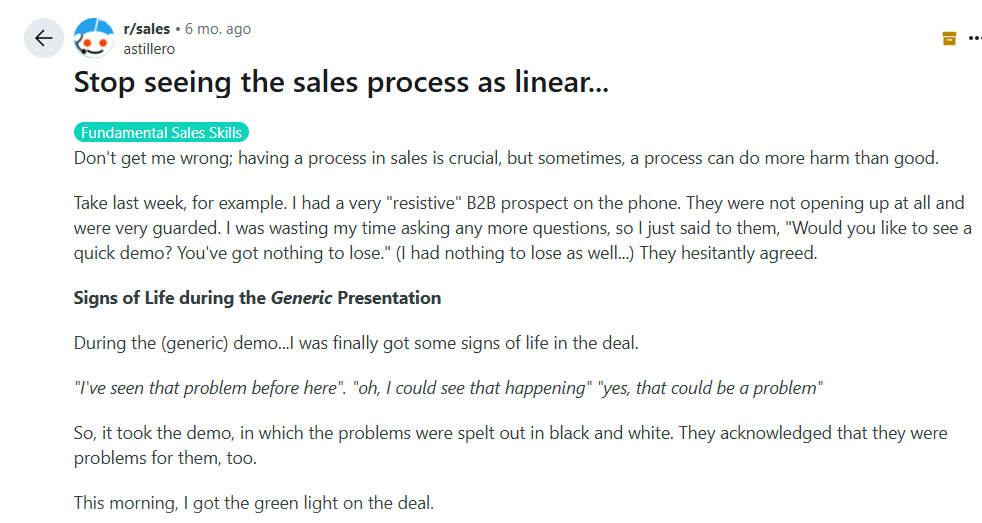
He’s right to a point. Some deals can take a different turn: some clients may come onboard easily because they have a lean corporate structure but some other clients may need agreement from multiple stakeholders before they proceed with your agency.
In this article, I'll break down the complete agency sales process, step by step. I'll also show you how ManyRequests quietly carries your entire creative agency sales workflow behind the scenes in one branded portal (you're reading from us after all.)
A creative agency's sales process is a series of steps that help your agency convert prospects into paying clients. It helps you understand their goals, so you can promise the outcomes they need to close the deal.
Let's get right into it:
Lead generation is when you attract potential customers who show interest in your services.
It's identifying the customers who have made the first move (maybe they shared their contact information via forms on your landing page), and reaching out to them.
Now, you could have it all wrong from the start if you stuff your pipeline with unqualified leads. Many creative agencies are overwhelmed with this set of leads because they don't filter their process.
Let’s break that down.
When you generate leads, you filter prospects who may need your services from people who don't. But to do that, you need to work on your positioning first.
This means being clear about:
One of our clients, 55Knots, a design subscription agency, built its entire growth engine around a productized model with transparent pricing, and project scope for each model.
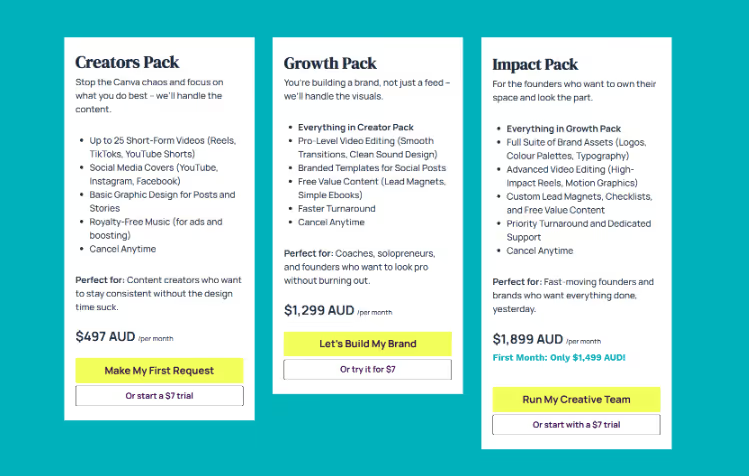
This way, they have their target market locked in on what they offer and HOW they offer it.
Any lead they generate from this specific process shows that they're highly interested leads, which can be much rewarding. This shows that to find highly qualified leads, set up a productized service catalog.
If you still ask your leads to hop on a call to understand what you do, that may be the reason why you're losing them before you even talk to them.
A productized service catalog shows clients what you do before they get on a call with you. This makes it easy for you to pitch how you have a better process than other agencies when you get on the call.
Here's what a productized lead funnel looks like:

You can set up a productized service catalog in minutes if you use ManyRequests.
All you need is to sign up, create the services you want to offer (and write an overview of what each entails), attach intake forms, pricing rules (fixed or recurring), and customize your client portal with your domain, logo and brand colors.
Once you set it up, it can look like this:
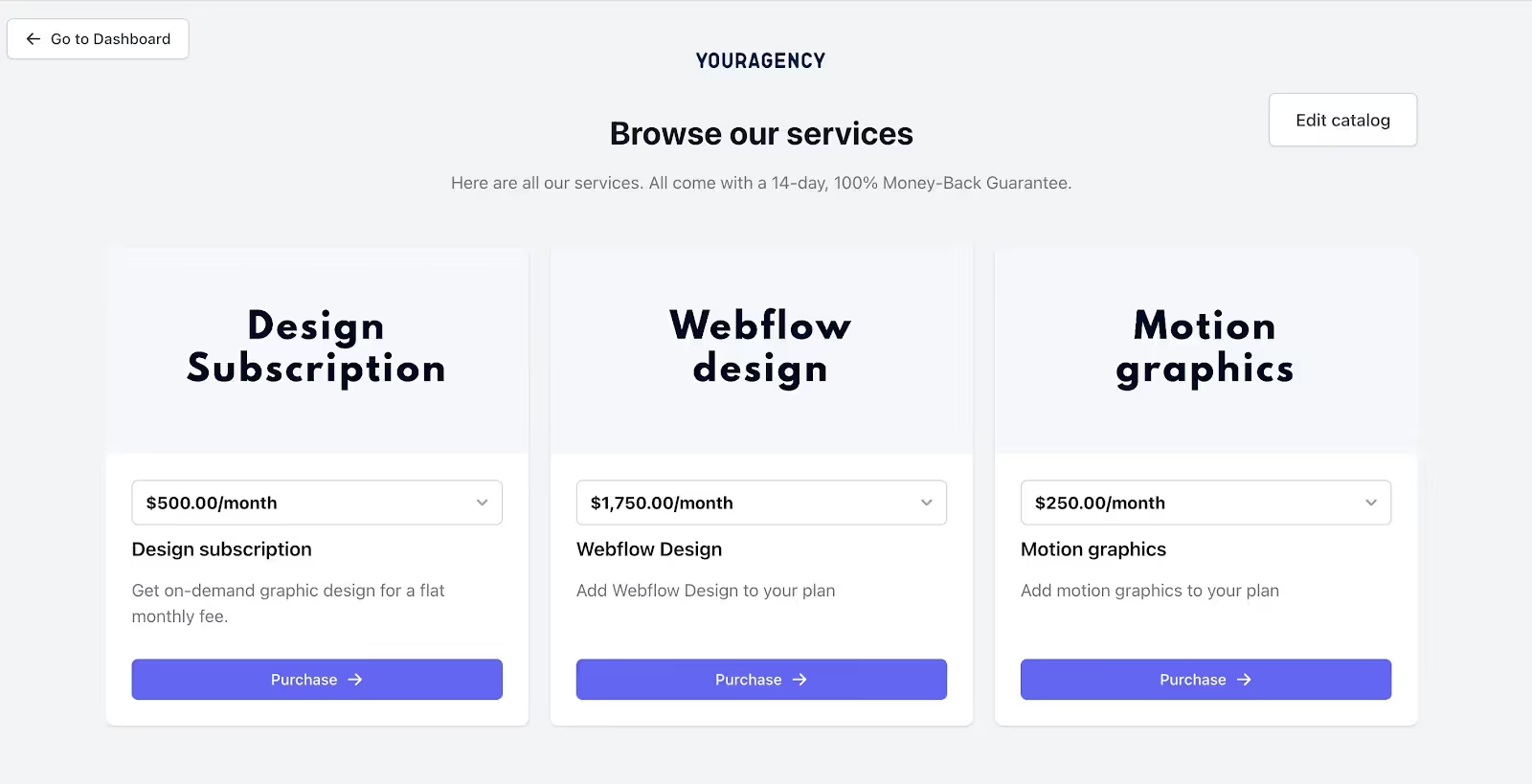
You can then generate links from these services and embed it on your website just like one of our clients, Pronto, does here:
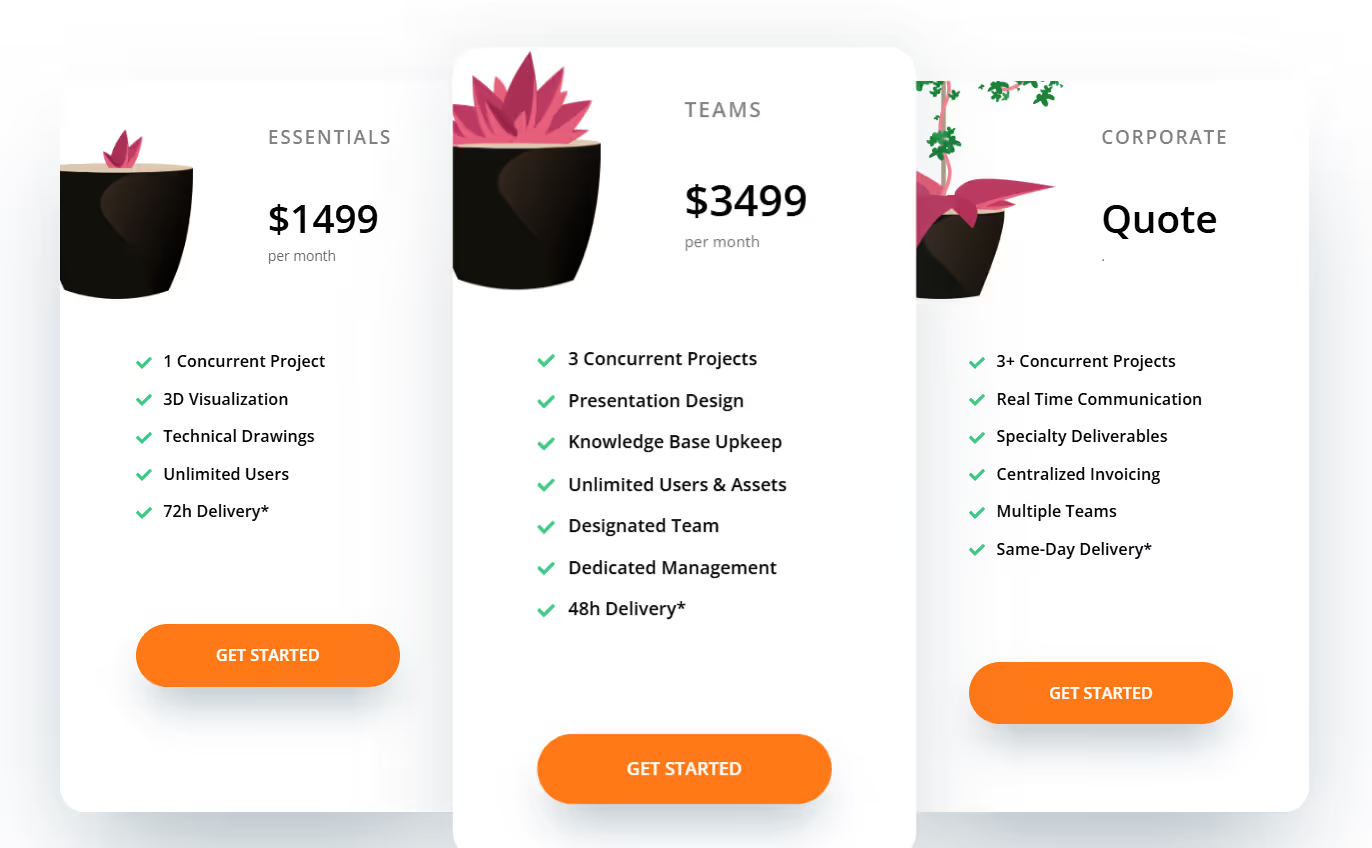
When a lead lands there, they know:
And if they hit “Get started,” they'll be referred to your checkout page:
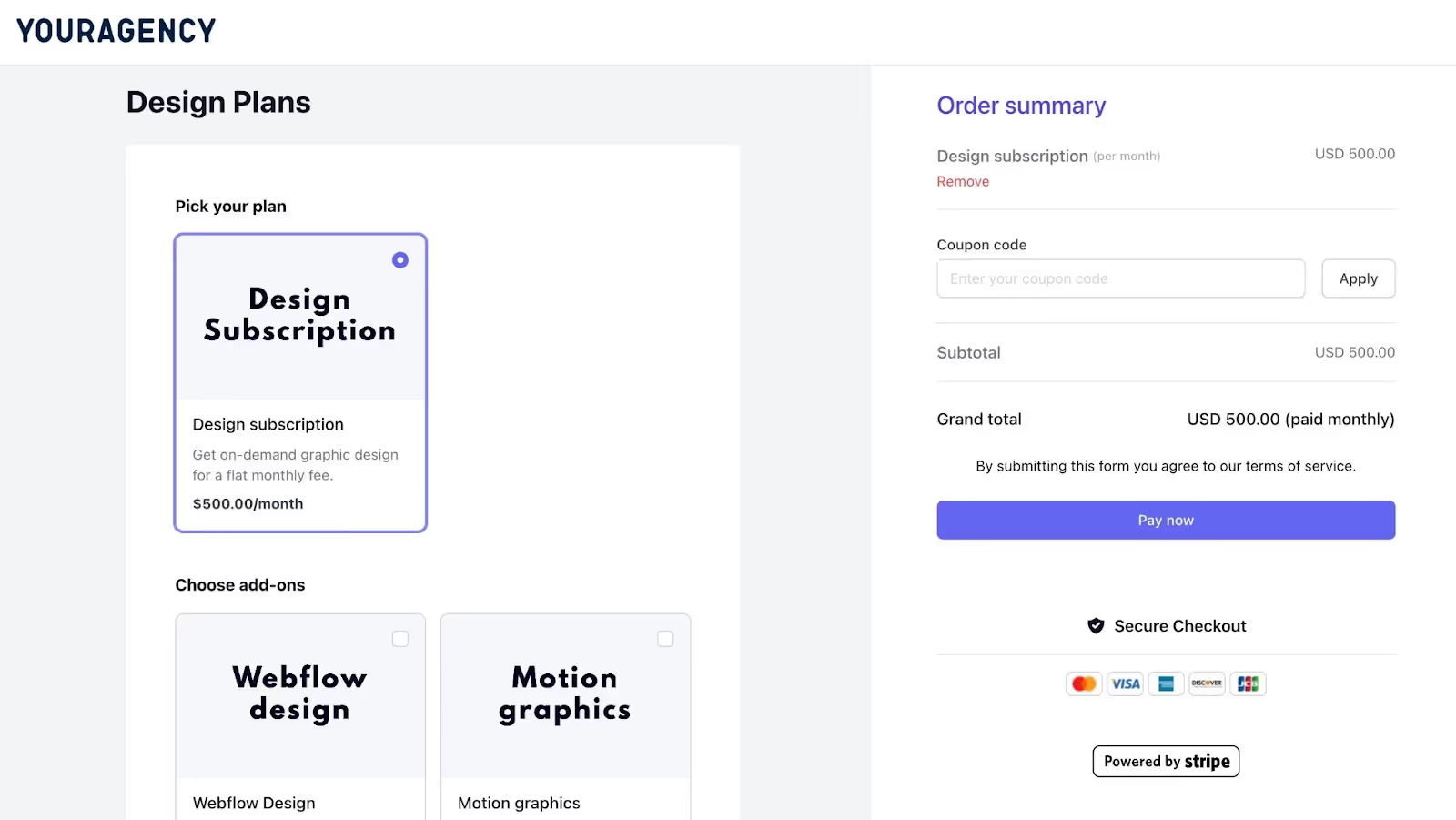
This automatically disqualifies the wrong clients early, and your clients are more prepared when you get on a call for alignment.
A discovery call is a consulting session where you can ask prospects defined questions about their expectations, project scope, and also get documentation that can make handoffs to your team much easier.
Now, here’s what to ask on a discovery call:
During this call, ask about your client's business, their goals, what kind of content (or design) they need, what they want in plain terms.
David Klose from Grow&Convert says they interview their clients before they even look for keywords.
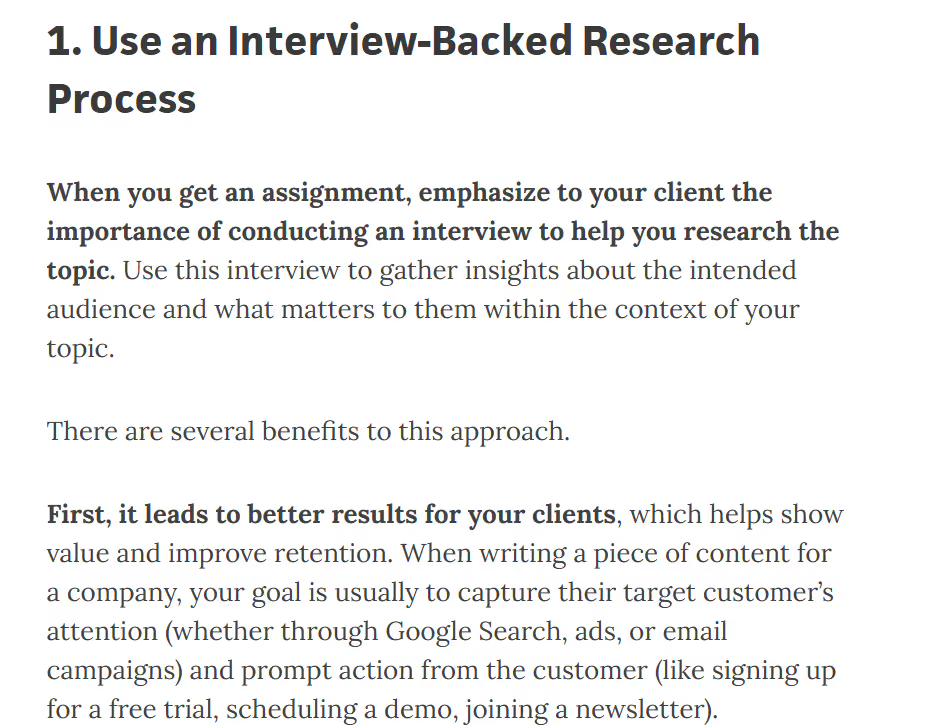
They come up with topics to write about based on what they discuss with clients during these calls.
Like G&C, interviewing your clients about their project needs, and how they think your agency can help them, so you can manage expectations. All this information will also help you create a reliable brief when you start working on the project.
Ask to know what they've tried, what didn't work, what part worked, what internal resources they have, and what they need help with. This is where you’ll spot scope creep. For instance, if they want SEO content writing services but they also want to redesign their whole branding without recognizing that it's another project, you can flag it here.
This is where it may get awkward, because most agencies don't ask directly. But trust me, it's important.
You can make discovery call questions about budget less awkward by asking them these questions:
Not every lead deserves a proposal.
You talk to a lead who seems interested, and spend 3 hours writing a beautiful proposal, and then the lead stops responding, or worse, they come back two weeks later asking for a 70% discount and a revised scope.
Now, what's the best way to qualify leads before you create proposals?
Use consultative frameworks like CHAMP or MEDDIC to ask the right questions and determine if the client and their project are the right fit for you.
However, it's also important that the framework you follow prioritizes the client's problem. After all, that's the whole point of your service to them.
Let's take CHAMP, for example.

CHAMP puts the client's needs and pain first, which is the best approach to lead with value. It also gives you a better feel for which leads have needs that your team can solve, even if they are not sure about a budget yet.
It focuses less on the money and more on how you can help them, which is how you make money anyway.
You can also use ManyRequests at this stage to create automation rules with Zapier (which you can integrate to your client portal). You can tag your leads as high-priority, cold or not ready, to know which prospects are a good fit for you, and which are not. It also helps you know to send follow-up emails (and when).
The goal of your proposal is not to impress the client.
One mistake that many businesses make is that they overpitch their services during proposals.
For instance, this video from Blake Scales Ads shares how they pitch to leads with Loom videos. According to the video, he records the client's website to show what's wrong with their site and what could be improved, and then introduces his agency and how he can help them.
For me, I think it's a long process, which you probably won't need to do if you follow the first three steps we’ve discussed).
And it's not just me (this person believes so too, and the operator even agrees).

However, it's really personalized. Which can inspire confidence in your services, especially if the plans you've outlined are really feasible.
In summary, your proposal should;
📌 Read more: Sales deck template, to learn how to educate users on your services.
Here's what should be in your proposal:
📌 Read more: check our web design proposal guide template to learn how to structure agency proposals.
If you're using ManyRequests, you can link directly to your service options and pricing so that the client can choose their tier, and you can generate the contract and automate billing immediately.
For example, if you accept 50% payment upfront, you can structure your pricing rules to reflect this immediately after the client chooses the service plan.
You can also customize the payment schedules, as seen below (for recurring projects):
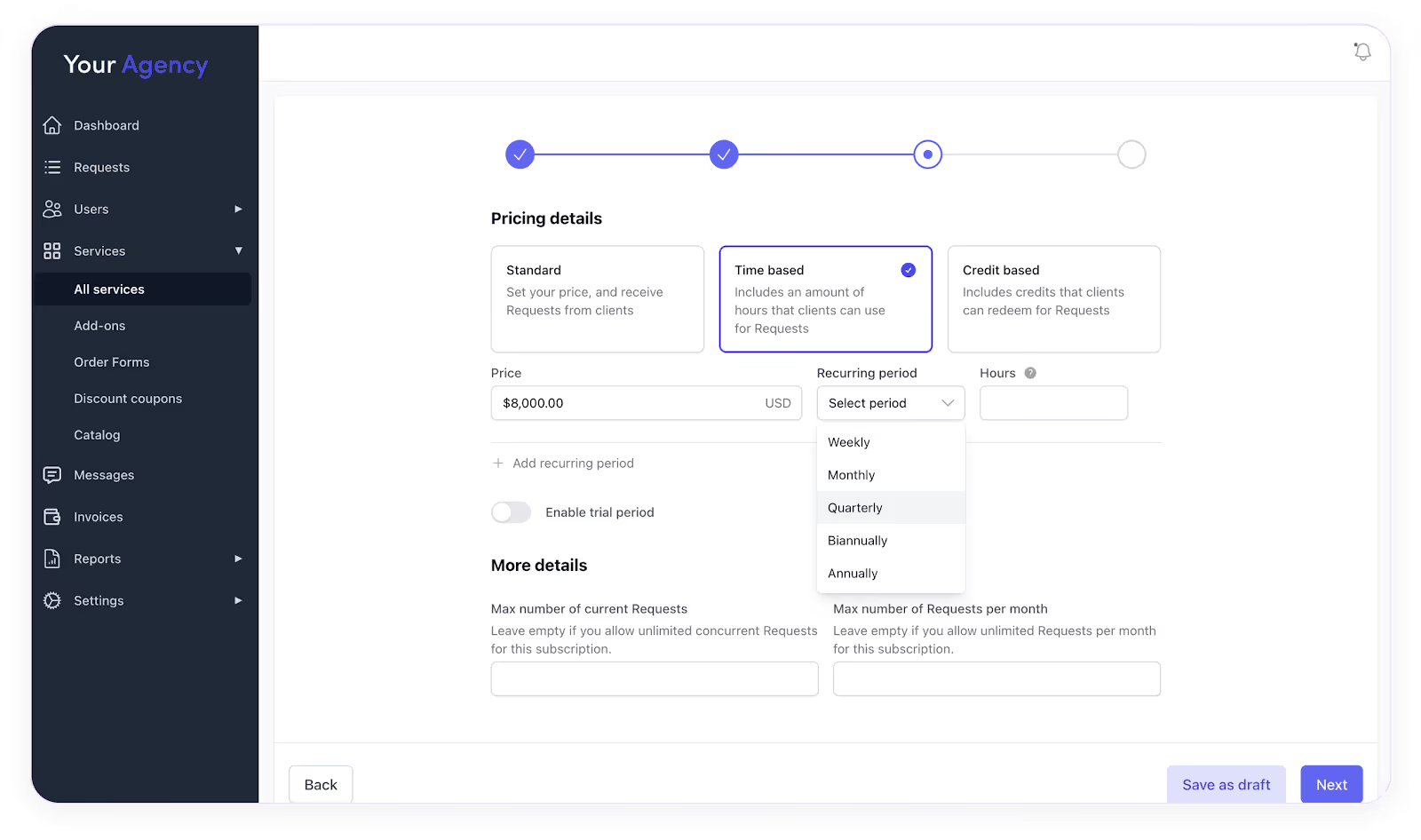
One of the biggest lies in the creative agency market is to believe that the project is automatically on because the lead said yes and wants to run it by someone in their company.
If you’ve been in the agency sales process long enough, you know the project is not sealed until the client pays. Or at least signs a contract.
A verbal Yes has a lot less value until there's a signed agreement and payment.
📌 Pro Tip: This is a no-brainer, but make sure you get paid upfront, or agree on a payment schedule before you start the project. Inconsistent cash flow handicaps the project’s progress and your team's morale.
See this Reddit user, for example:
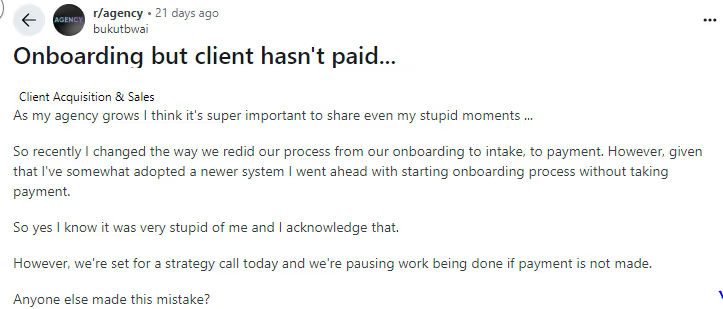
Trust me, you don't want to spend the rest of the project timeline chasing payments like this person here:
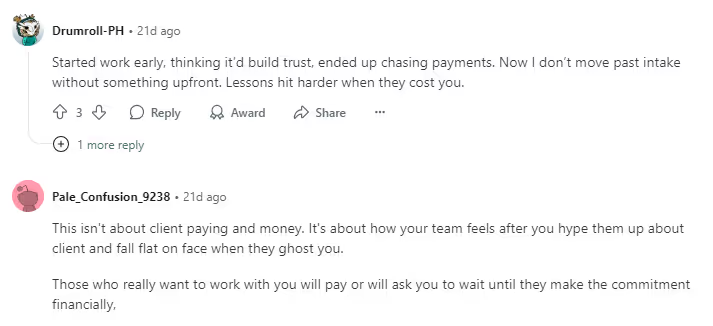
If you already have this issue, read this article on what to do when your client doesn't pay.
So how do you convince the client to pay after you’ve sent your proposal in?
The moment a client signs the contract and sends payment, you’re on the clock.
How you onboard your client tells them:
If they’re anxious or unclear during onboarding, they’ll be micromanaging and nervous the whole way.
Now, how do you onboard new clients?
Transfer everything that was promised and implied in the sales process into concrete, operational terms.
Here's what I mean:
You already discussed the project scope during the call and proposal stage, and this is when you implement it.
That means showing them
I’ll share the 5 stages of onboarding that work:
This is when you thank the client for trusting you, and confirm the receipt of payment and contract. Introduce your team and key contacts (your project leads and designers), and include a kickoff meeting link (if necessary).
Send a form or checklist to request for the client's:
Centralize your intake process so clients don't send you assets across five email threads, then complain you missed something.
You want to have all your assets in one place, so you can easily refer to them. If you use ManyRequests, every file is kept in one place, so you won't have to scour your email to find one particular file the client sent:
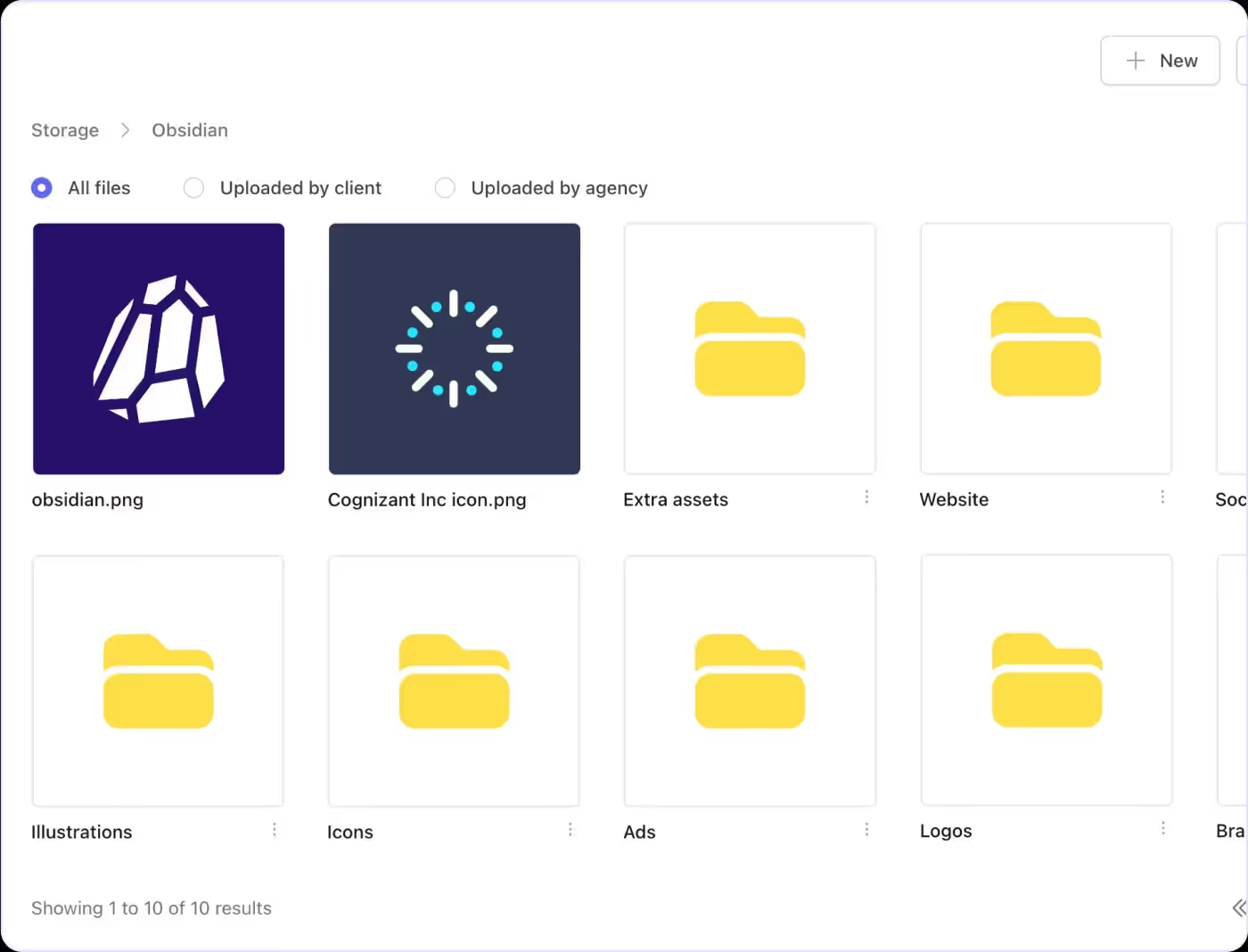
📌 Read more on our detailed guideline on intake processes for creative agencies.
Share a high-level project timeline, and include internal delivery dates and when you need client input. Communicate any dependencies (for example, we need feedback within 48 hours to stay on schedule).
Use this session to:
Tell the client how they’ll get work (email, portal, Google Drive), and set review cycles to show how and when you'll submit the deliverables and how many revisions will follow.
Most creative agencies struggle because they don’t have a defined process for turning prospects into clients.
A clear, repeatable creative agency sales workflow puts your agency in control. It filters out the wrong leads, pre-qualifies the right ones, gives your team structure, and creates clarity for your clients at every stage.
And with ManyRequests, you don’t have to duct-tape tools together to make it work. You can use the software as your CRM, branded client portal, project management tool, and to also onboard clients into your space. Sign up for a 14-day free trial (no credit card required), to create a better experience for your clients.